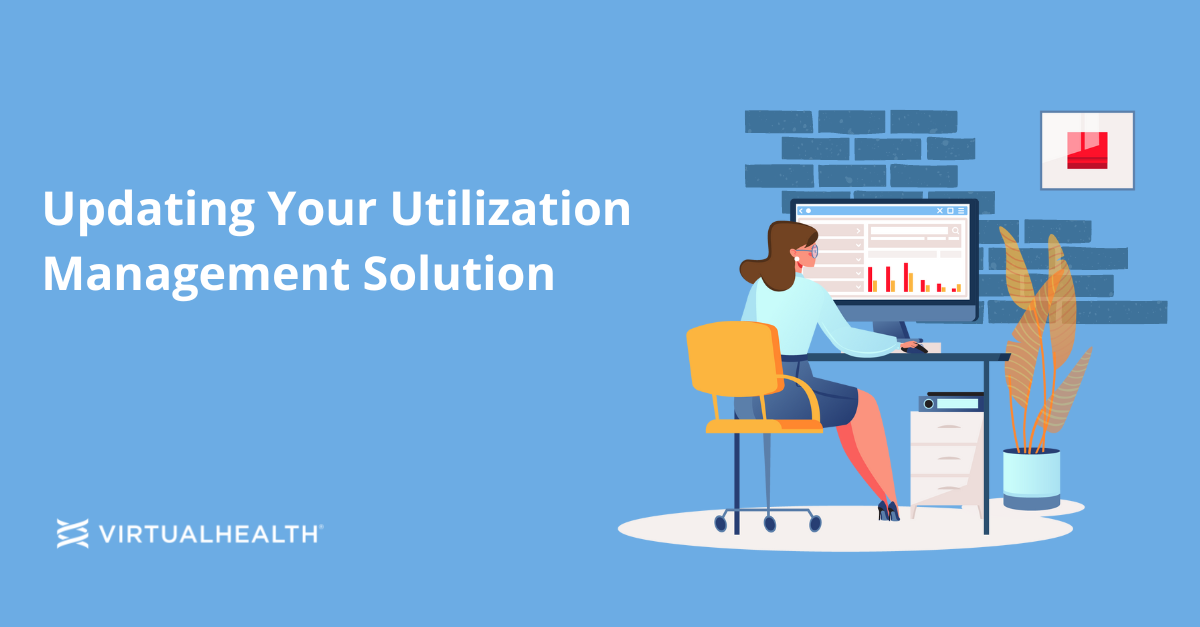In the last few years, challenges related to prior authorization have created inefficiencies in health care that negatively impact both health outcomes for members and the costs both payers and members must pay. That’s why in December 2022, the Centers for Medicare & Medicaid Services (CMS) proposed Rule CMS-0057-P.
The new rule is designed to advance interoperability goals and improve prior authorization processes to enable more accurate, more effective care for Medicare and Medicaid beneficiaries. And it is one of the top reasons why we see companies researching an update to their utilization management (UM) systems.
See below for the top three reasons it might be time to consider a modern UM solution.
1. Meeting New Prior Authorization Process Requirements
CMS’ new rule around prior authorization places new requirements on Medicare Advantage, state Medicaid and CHIP Fee-for-Service programs, Medicaid managed care plans and CHIP managed care entities, as well as Qualified Health Plan issuers on the Federally Facilitated Exchanges (FFEs).
The proposed rule includes five key provisions and five Requests for Information, including some of the below.
- Implement a Health Level 7® (HL7®) Fast Healthcare Interoperability Resources®(FHIR®) Patient Access Application Programming Interface (API)
- Report annual metrics to CMS about the use of this Patient Access API
- Build and maintain a Provider Access API with a mechanism for patients to opt out of data availability.
- Payer-to-payer data exchange (*FHIR® API encouraged but not required)
- Build and maintain a FHIR API for prior authorization that automates several key processes.
- New rules and requirements for providers and payers around denials, prior authorization time frames, and metrics
(View the full list and details from CMS here.)
2. Improve Health Outcomes for Members
With some advanced medical management solutions (like HELIOS®) intelligent UM software is integrated alongside care management to enable the alignment of data. This intelligent platform can then extract member-specific data from different sources, including EHRs, members’ care history and assessment responses, and use evidence-based criteria to help guide physicians and care managers toward more accurate care decisions.
Instead of submitting several disconnected prior authorizations for one patient, or submitting a prior authorization for an unnecessary procedure, a modern solution can streamline things and enable simultaneous approvals for one patient – for an entire episode of care, which speeds up both care access and member health results.
Below are a few other benefits an advanced UM software solution could provide:
- Faster authorizations
- Streamlined utilization reviews, appeals, and grievances.
- Efficient data management, with no duplication of effort across teams
- Reduced risk of human error (and less stress for staff!)
- Automated prior authorization via Edifecs integration
- Higher plan satisfaction ratings
- Significant cost savings
[HELIOSUM CTA] – use seamless CM + UM care continuum language CTA image]
3. Enable Health Care Staff to Focus on Patients, Reduce Burnout and Wasted Time
Time is money. And for healthcare organizations, time is also about energy expenditure, the mental well-being of staff, and the ability to focus on quality care experiences. Inefficient and ineffective prior authorization specifically can delay access to necessary care, and even result in members abandoning their treatment plans or experiencing an adverse event like hospitalization.
A recent survey of physicians and health care staff from the American Medical Association (AMA) found some startling insights about how inefficient prior authorization can negatively impact health outcomes, patient care, and staff bandwidth.
See below for a few facts that emphasize the need for advanced UM and streamlined prior authorization from the AMA Survey (view full survey results here).
- 25% of physicians report that prior authorization has led to a patient’s hospitalization.
- 46% of physicians report that prior authorization has led to immediate care and/or ER visits.
- 33% of physicians report that prior authorization has led to a serious adverse event for a patient in their care.
- 64% of physicians report that prior authorization has led to ineffective initial treatments.
- 94% of physicians reported care delays Always (14%), Often (42%) and Sometimes (37%) happen due to issues associated with prior authorization.
- 88% of physicians describe the burden associated with PA as high or extremely high.
- Physicians and staff spend about two business days on average each week completing prior authorizations.
Allowing staff to focus more time on patients and less on authorization or administrative efforts is key. HELIOS, for example, has been proven to improve care team efficiency by up to 92%, allowing care teams to spend more time on patients and less on paperwork.
Learn More About Advancing Utilization Management
Taking the steps to improve UM and prior authorization can seem daunting. To help make things simpler, here is a free webinar on an advanced way to approach UM, features to consider and more.

